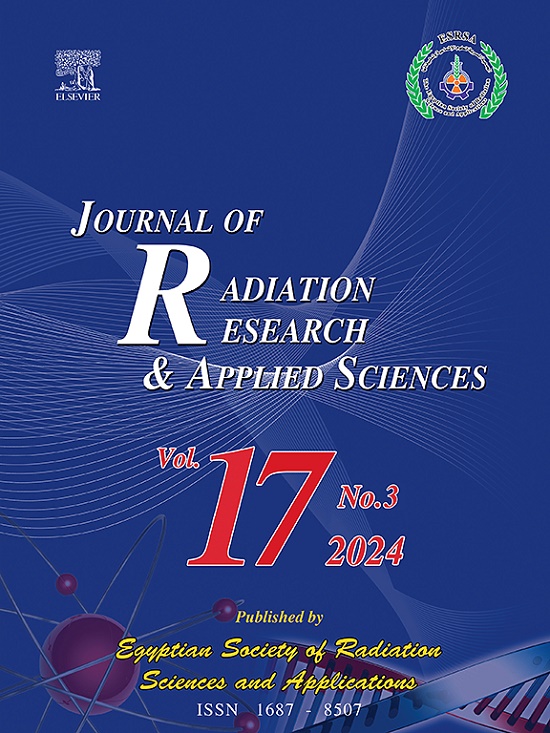Enhancing skin toxicity predictions in breast cancer radiotherapy through integrated CT radiomics, dosiomics, and machine learning models
IF 1.7
4区 综合性期刊
Q2 MULTIDISCIPLINARY SCIENCES
Journal of Radiation Research and Applied Sciences
Pub Date : 2025-02-16
DOI:10.1016/j.jrras.2025.101360
引用次数: 0
Abstract
Objective
This study aimed to develop and test a multidimensional machine learning framework that combines radiomic, dosiomic, and dosimetric features to predict severe skin toxicity in breast cancer patients undergoing radiotherapy. The goal was to improve prediction accuracy and support personalized treatment planning.
Materials and methods
The study analyzed a retrospective cohort of 789 breast cancer patients. Pre-treatment computed tomography images were used to extract 215 radiomic features, while 78 dosiomic features were derived from radiation dose distributions. Additionally, 22 dosimetric features, such as dose-volume histograms and mean dose, were included. Feature selection was performed using three methods: Recursive Feature Elimination (RFE), Least Absolute Shrinkage and Selection Operator, and Analysis of Variance. Seven classifiers were trained and validated through 5-fold cross-validation. These classifiers included k-Nearest Neighbors, Random Forest, Support Vector Machines, Gradient Boosting Machine, Extreme Gradient Boosting, Voting, and Stacking. Model performance was evaluated using accuracy, sensitivity, and area under the receiver operating characteristic curve (AUC-ROC). SHapley Additive exPlanations (SHAP) analysis was applied to interpret the contributions of individual features to the model predictions.
Results
The best predictive performance was achieved by combining radiomic, dosiomic, and dosimetric features. The Stacking Classifier with RFE showed the highest metrics: 96% accuracy, 95% sensitivity, and 97% AUC-ROC. Among the individual feature types, radiomic features performed better than dosiomic and dosimetric features, achieving an AUC-ROC of 93% with RFE and the Voting Classifier. Dosiomic features were more predictive than dosimetric features alone, with an AUC-ROC of 94% using the Stacking Classifier. SHAP analysis highlighted that texture and spatial features were key predictors of skin toxicity.
Conclusions
Integrating radiomic, dosiomic, and dosimetric features significantly enhances the prediction of radiation-induced skin toxicity. These findings highlight the potential of machine learning to improve personalized treatment planning. Further validation in larger, multi-center studies is recommended.
求助全文
约1分钟内获得全文
求助全文
来源期刊

Journal of Radiation Research and Applied Sciences
MULTIDISCIPLINARY SCIENCES-
自引率
5.90%
发文量
130
审稿时长
16 weeks
期刊介绍:
Journal of Radiation Research and Applied Sciences provides a high quality medium for the publication of substantial, original and scientific and technological papers on the development and applications of nuclear, radiation and isotopes in biology, medicine, drugs, biochemistry, microbiology, agriculture, entomology, food technology, chemistry, physics, solid states, engineering, environmental and applied sciences.
 求助内容:
求助内容: 应助结果提醒方式:
应助结果提醒方式:


